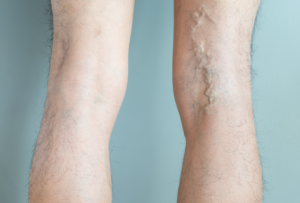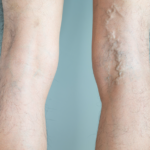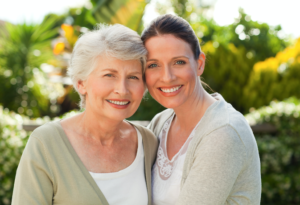 Varicose veins are an issue that most people never talk about.
Varicose veins are an issue that most people never talk about.
Current estimates state that approximately 50% of the United States population o50 and over have varicose veins. That’s 40 million Americans. With so many people living with venous insufficiency, you may be surprised to learn how little is widely known about varicose veins.
Let’s look at some of the common misconceptions so we can sort out fact from fiction.
Myth #1 Men don’t develop varicose veins – Vein disorders are more common in women because of hormones, birth control, and pregnancy, but there are many other factors for developing vein disease that is not exclusive to women – age, heredity, obesity, activity level, and profession can also contribute to men developing varicose veins as well. It’s expected that 43% of men will have experienced vein disease in some form by the time they reach their 60’s, and varicose veins are often the first sign that it’s occurring.
While varicose veins are certainly more frequently seen in the female population, around 55% of current cases, men can also develop vein issues.
Myth #2 Varicose veins are only a cosmetic problem – Treating varicose veins in the early stages can be extremely beneficial and helpful in improving the long-term vein health of the patient. Varicose veins can cause pain and can be a sign of much more serious problems, such as Chronic Venous Insufficiency (CVI) or Deep Vein Thrombosis (DVT) that can lead to ulcers and blood clots, among other problems.
Myth #3 Home Treatments – There are treatments that those with varicose veins can do at home. They may help to eliminate symptoms, but varicose veins cannot be cured once present by any at home trick. Maintaining a healthy weight and diet, elevating the legs and feet when sitting or laying down, exercising, frequently and staying active, not smoking cigarettes, avoiding the use of high heels, and wearing compression stockings can all contribute to better overall vein health. While these actions can certainly help, if you have noticed any of the physical symptoms of vein disease, it’s always best to consult with your physician before taking any action.
Myth #5 Spider veins and Varicose veins are the same things – Both varicose veins and spider veins are caused by damaged or leaking valves, however, spider veins are typically seen as a strictly cosmetic issue, while varicose veins can signify deeper health issues. Spider veins are smaller and appear in sunburst patterns, and, unlike varicose veins, they are not elevated from the skin. Both conditions can cause physical embarrassment, and, fortunately, both are easily treated.
Myth #4 I can’t afford to treat my veins – Varicose veins are not a cosmetic condition, and because varicose veins present a valid medical condition with the potential for dangerous progression, most insurance companies will cover their treatment and removal. Spider vein treatments, while available, are considered a cosmetic treatment and thus will not always be covered. It’s always best if you speak with your insurance provider before making any decisions.
Educating yourself about varicose veins and venous disease is only the first step towards improving your vein health. For more information about vein disease, treatments, and prevention, please visit Dr. Zuzga at West Florida Vein Center in Safety Harbor and serving all of Tampa, FL. (727) 712-3233 www.westfloridaveincenter.com


 We are hearing an awful lot about genetics and health in the news these days. It may be causing you to wonder if your mother, aunt or grandmother had spider veins – you are destined to get them as well?
We are hearing an awful lot about genetics and health in the news these days. It may be causing you to wonder if your mother, aunt or grandmother had spider veins – you are destined to get them as well?